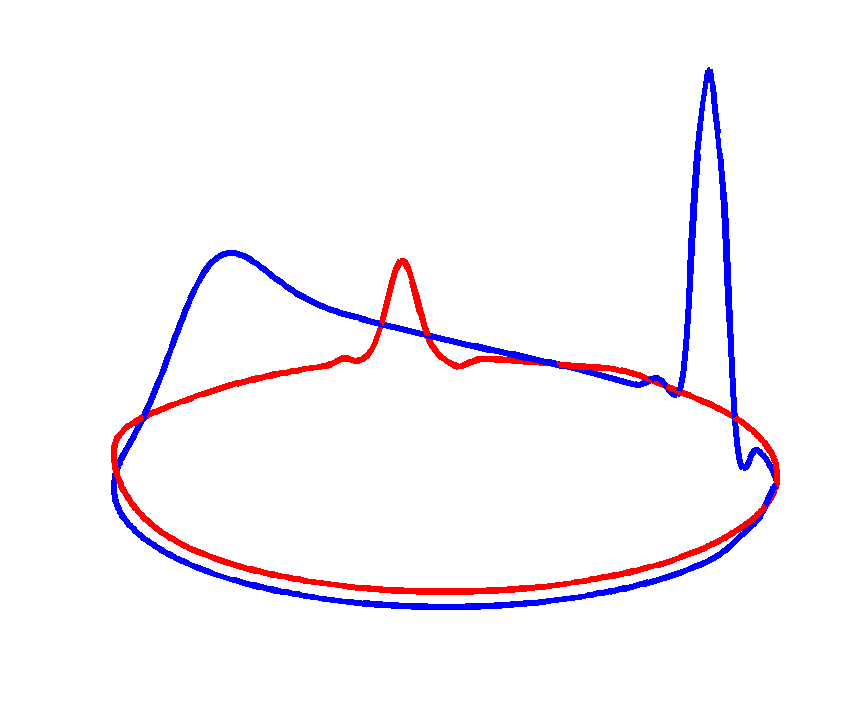- Documentation available at: www.fecgsyn.com
- Large dataset of simulated signals (FECGSYNDB) available at Physionet
- See latest release under https://github.com/fernandoandreotti/fecgsyn/releases/
FECGSYN is the product of a collaboration between the Department of Engineering Science, University of Oxford (DES-OX), the Institute of Biomedical Engineering, TU Dresden (IBMT-TUD), the Department of Electrical and Electronic Engineering, University of Melbourne (EEE-UOM) and the Biomedical Engineering Faculty at the Technion Israel Institute of Technology (BME-IIT). The authors are:
- Joachim Behar
- Fernando Andreotti
- Julien Oster
- Sebastian Zaunseder
- Gari D. Clifford
- Emerson Keenan
- Chandan Karmakar
- Marimuthu Palaniswami
Contacts: [email protected] & [email protected]
FECGSYN is built upon the work from McSharry et al. [1] and Sameni et al. [2] The original code from McSharry et al. is available in MATLAB and in C on PhysioNet. The code developed by Sameni et al. is part of the OSET toolbox, also available online in MATLAB. Links to these work are available at: http://physionet.incor.usp.br/physiotools/ipmcode/
-
McSharry, Patrick E and Clifford, Gari D and Tarassenko, Lionel and Smith, Leonard A. A dynamical model for generating synthetic electrocardiogram signals. IEEE Transactions on Biomedical Engineering, 50(3) 2003.
-
Sameni, Reza, et al. Multichannel ECG and noise modeling: application to maternal and foetal ECG signals. EURASIP Journal on Advances in Signal Processing 2007 (2007).
When using FECGSYN please reference at least one of the following articles:
- Behar, Joachim, Fernando Andreotti, Sebastian Zaunseder, Qiao Li, Julien Oster, and Gari D Clifford. 2014. "An ECG Model for Simulating Maternal-Foetal Activity Mixtures on Abdominal ECG Recordings." Physiol Meas 35(8), pp.1537-50, 2014.
and/or
- Andreotti F., Behar J., Zaunseder S.,Oster J. and Clifford G D., An Open-Source Framework for Stress-Testing Non-Invasive Foetal ECG Extraction Algorithms. Physiol Meas 37(5), pp. 627-648, 2016.
If you are using FECGSYN's asymmetric volume conductor modeling capability, please reference the following article:
- Keenan E., Karmakar C K. and Palaniswami M., The effects of asymmetric volume conductor modeling on non-invasive fetal ECG extraction. Physiol Meas 39(10), pp. 105013, 2018.
Released under the GNU General Public License
This program is free software: you can redistribute it and/or modify it under the terms of the GNU General Public License as published by the Free Software Foundation, either version 3 of the License, or (at your option) any later version.
This program is distributed in the hope that it will be useful, but WITHOUT ANY WARRANTY; without even the implied warranty of MERCHANTABILITY or FITNESS FOR A PARTICULAR PURPOSE. See the GNU General Public License for more details.
You should have received a copy of the GNU General Public License along with this program. If not, see http://www.gnu.org/licenses/.
This toolbox makes use of several other pre-existing open source algorithms listed below:
- ECGSYN: A realistic ECG waveform generator, by Dr. Patrick McSharry and Gari D. Clifford, available here (licensed under GNU GPL 2.0)
- Open Source ECG Toolbox (OSET), v1.0, by Dr. Reza Sameni, available here (licensed under GNU GPL 2.0)
- FastICA for Matlab, v2.5, by Hugo Gävert, Jarmo Hurri, Jaakko Särelä, and Aapo Hyvärinen available here (licensed under GNU GPL 2.0)
- JadeR, by Jean-Francois Cardoso, available here (BSD license)
- FECG-ESN toolbox, v1.0, Dr. Joachim Behar, available here (licensed under GNU GPL 2.0)
- ESN learning toolbox, v1.0, by H. Jaeger (Fraunhofer IAIS), available here (unlicensed)
- QRS Detection with Pan-Tompkins algorithm, by Daniel Wedekind, available here (licensed under GNU GPL 2.0)
- arrow.m, by Dr. Erik A. Johnson, available here, (BSD license)
- fwhm.m, v1.2, by Patrick Egan, available here, (BSD license)
- pcorr2.m, by Peter Rydesäter, available here (BSD license)
- FieldTrip: The MATLAB toolbox for MEG and EEG analysis, v20190828, by Robert Oostenveld, Pascal Fries, Eric Maris, and Jan-Mathijs Schoffelen, available here (licensed under GNU GPL 2.0)
- Iso2Mesh, v1.9.0-1, Qianqian Fang, available here (licensed under GNU GPL 2.0)
Not provided with package, ocasionally required, see install instructions:
- WFDB Toolbox for MATLAB and Octave, v.0.9.9, by Dr. Ikaro Silva, available here (licensed under GNU GPL 2.0)
- Pre-processed anatomic models, by Emerson Keenan, available here (licensed under CC BY-NC-SA 2.0 FR)


